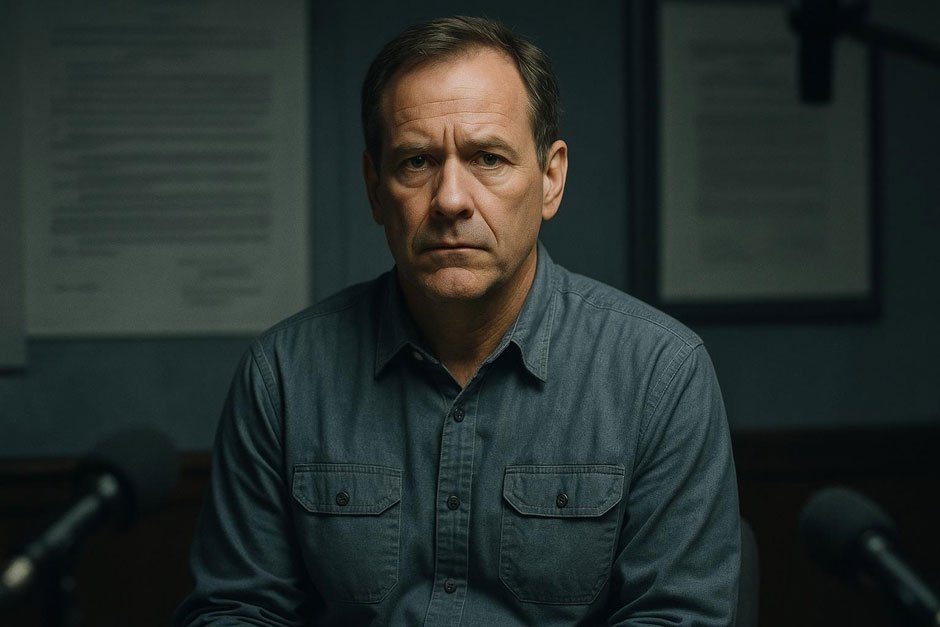When most people think of stars and celebrities, they picture Hollywood actors or chart-topping singers. But Paul Bonacci carved out a different kind of fame entirely. This Nebraska native became one of America’s most recognizable documentary figures through his involvement in the Franklin Cover-up case.
Bonacci’s story isn’t your typical rise to stardom. Instead of red carpets and award shows, his path to recognition came through courtrooms and camera interviews. His journey from small-town witness to documentary star spans over three decades and continues to spark heated debates across the country.
Early Life and Background
Growing up in Nebraska, Paul Bonacci lived what seemed like an ordinary Midwestern childhood. Nothing in his early years suggested he would one day become a central figure in one of America’s most controversial legal cases.
The young Bonacci had no idea that his life would take such a dramatic turn. Like many kids in his neighborhood, he went to school, played with friends, and lived a relatively quiet existence. That all changed when he became involved in events that would thrust him into the national spotlight.
His transformation from regular citizen to key witness happened gradually. What started as local testimony eventually grew into something much larger, setting the stage for decades of public attention and media appearances.
The Franklin Cover-up Allegations
In 1988, allegations surfaced that would change Paul Bonacci’s life forever. The Franklin Cover-up case involved claims of a child trafficking ring connected to prominent Nebraska figures, with Lawrence E. King Jr. at the center of the controversy.
Bonacci stepped forward as a key witness in this explosive case. His detailed testimony described alleged events that supposedly took place across multiple states. The allegations were serious enough to capture national attention and trigger extensive investigations.
The case divided public opinion right down the middle. Some viewed Bonacci as a brave truth-teller willing to speak out against powerful interests. Others questioned the validity of the claims, especially after official investigations concluded the allegations were unfounded.
Despite the controversy, Bonacci’s role as a primary witness established his place in this historic case. His willingness to testify publicly made him both a celebrated figure among supporters and a lightning rod for criticism from skeptics.
Documentary Appearances and Media Presence
Paul Bonacci’s transition into documentary filmmaking began with “Conspiracy of Silence” in 1993. This production introduced his story to audiences beyond Nebraska and marked the beginning of his media career.
His most significant documentary appearance came in 2014 with “Who Took Johnny.” The film explored missing children cases and featured Bonacci as a central interview subject. His compelling on-screen presence helped make the documentary a talking point among true crime enthusiasts.
More recently, Bonacci appeared in “Seeking Answers” in 2021, proving his staying power in the documentary world. Each appearance has reinforced his status as a go-to interview subject for filmmakers exploring controversial topics.
These documentary roles have given Bonacci a unique position in American media. Unlike traditional celebrities, his fame comes from his willingness to discuss difficult subjects and maintain his version of events despite ongoing criticism.
Legal Battles and Civil Lawsuit Victory
While federal investigators dismissed the Franklin allegations, Paul Bonacci pursued his own legal remedy. In 1991, he filed a civil lawsuit against Lawrence King, seeking justice through the court system.
Bonacci’s legal strategy paid off when King failed to mount a defense. The court awarded Bonacci a default judgment, giving him a form of legal vindication that supporters point to as proof of his credibility.
This court victory became a cornerstone of Bonacci’s narrative. While critics argue that a default judgment proves nothing about the underlying claims, supporters view it as official recognition of wrongdoing.
The lawsuit success helped establish Bonacci as more than just another witness. It gave him legal standing and provided a foundation for his continued advocacy and public speaking on the Franklin case.
Controversy and Credibility Questions
Not everyone believes Paul Bonacci’s version of events. Federal investigators concluded that the Franklin allegations were part of a “carefully crafted hoax,” raising serious questions about witness credibility.
Critics point to various inconsistencies and the lack of physical evidence supporting the claims. The official determination that the case was fabricated has given ammunition to those who doubt Bonacci’s truthfulness.
However, Bonacci’s supporters argue that the investigation itself was flawed. They believe powerful interests worked to suppress the truth and that Bonacci’s consistent testimony over decades proves his honesty.
This credibility debate has made Bonacci a polarizing figure in American culture. Some see him as a courageous whistleblower, while others view him as part of an elaborate deception that fooled many people.
MK-Ultra Survivor Claims
Beyond the Franklin case, Paul Bonacci has also claimed to be a survivor of MK-Ultra, the CIA’s controversial mind control program. These assertions have expanded his appeal within conspiracy theory communities.
Bonacci’s MK-Ultra accounts have appeared in various media productions, where he describes alleged experiences with government psychological experiments. These stories have resonated with audiences interested in government conspiracy theories.
The MK-Ultra claims have given Bonacci a broader platform beyond the Franklin case. His willingness to discuss these sensitive topics has made him a popular interview subject for researchers exploring government misconduct.
While these assertions remain unverified, they have helped maintain Bonacci’s relevance in conspiracy circles and kept him in demand for documentary appearances and speaking engagements.
Legacy and Current Status
Paul Bonacci’s impact on American legal and media discourse extends far beyond his original testimony. His story has become a reference point for discussions about witness credibility and government accountability.
His continued media presence has kept the Franklin case alive in public consciousness decades after official investigations ended. Bonacci’s persistence in telling his story has made him an enduring figure in American conspiracy culture.
The ongoing interest in his experiences reflects broader questions about truth and justice in America. His case continues to be studied by researchers and journalists trying to understand how controversial cases develop and persist.
Today, Bonacci remains active in discussions about the Franklin case and related topics. His willingness to engage with media has ensured that his perspective stays part of the conversation about this controversial chapter in American history.
Impact on Documentary Filmmaking
Paul Bonacci’s story has significantly influenced documentary filmmaking, especially in investigative and conspiracy-focused productions. His appearances have shown how personal testimony can shape narrative and audience perception.
Filmmakers have found Bonacci to be a compelling subject whose story raises important questions about truth and memory. His case has become a study in how controversial figures can drive audience engagement while challenging documentary objectivity.
The continued production of documentaries featuring Bonacci reflects enduring public fascination with his story. His participation has provided filmmakers with access to a central figure in one of America’s most debated legal controversies.
Through his documentary work, Bonacci has helped establish how controversial witnesses can maintain public relevance long after their original testimony. His media presence demonstrates the lasting power of personal narrative in shaping public understanding.
Paul Bonacci’s journey from witness to documentary star shows the complex relationship between truth, media, and public perception in modern America. Whether seen as a courageous truth-teller or controversial figure, his impact on legal discourse and documentary filmmaking cannot be denied, ensuring his place in ongoing conversations about justice and the power of personal testimony.









